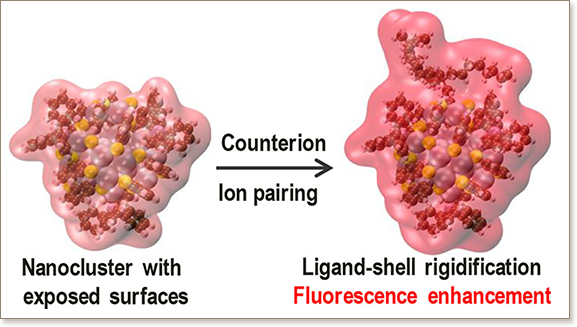


The lack of structurally distinct nanoclusters (NCs) of identical size and composition prevented the mechanistic understanding of their structural effects on ion pairing and concomitant optical properties. To produce such highly sought NCs, we designed a new monothiolate-for-dithiolate exchange strategy that enabled the selective transformation of the structure of a NC without affecting its metal atomicity or composition. Through this method, a bimetallic [PtAg28(BDT)12(PPh3)4]4– NC (1) was successfully synthesized from [PtAg28(S-Adm)18(PPh3)4]2+ NC (2) (S-Adm, 1-adamantanethiolate; BDT, 1,3-benzenedithiolate; PPh3, triphenylphosphine). The determined X-ray crystal structure of 1 showed a PtAg12 icosahedron core and a partially exposed surface, which are distinct from a face-centered cubic PtAg12 core and a fully covered surface of 2. We reveal through mass spectrometry (MS) that 1 forms ion pairs with counterions attracted by the core charge of the cluster, which is in line with density functional simulations. The MS data for 1, 2, and other NCs suggested that such attraction is facilitated by the exposed surface of 1. The formation of ion pairs increases the photoluminescence (PL) quantum yield of 1 up to 17.6% depending on the bulkiness of the counterion. Unlike small counterions, larger ones are calculated to occupy ≤90% of the volume near the exposed cluster surface and to make the ligand shell of 1 more rigid, which is observed to increase the PL. Thus, the developed synthesis strategy for structurally different NCs of the same size and composition allows us to probe the structure–property relationship for ion pairing and concomitant PL enhancement.